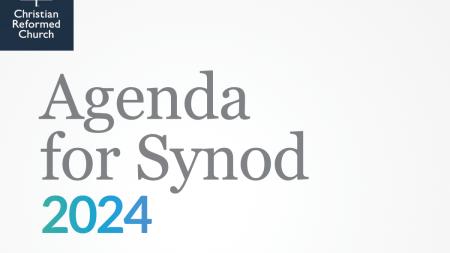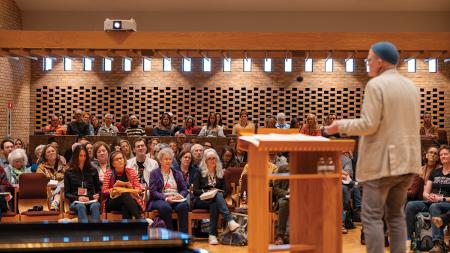Study Reports on Religion Worldwide

The Pew Center on Religion and Public Life
More than 1.6 billion people worldwide have no connection to a religious tradition. Many of them are atheists or agnostics, although a few have their own spiritual practices, says a new study.
In fact, the number of people unaffiliated with any religion makes them the third largest group in the world, according to the study by the Pew Research Center's Forum on Religion and Public Life.
The study uses many demographic sources to give an overview of religious affiliation -- or no affiliation at all -- in more than 230 countries.
Aggregated into the study are numbers for the Christian Reformed Church (CRC) and other Protestant denominations.
The numbers for the CRC and Protestants overall will come later in this story and contain no real surprises.
In fact, there are only a few things that stand out in the report and one involves people who say they are not affiliated with any religion. This finding has been widely reported on the Internet, social media and in the news.
According to the Pew study, some 16 percent of the world’s population say there are not affiliated with any religion. This rivals the number of Catholics across the globe.
But overall, says the study, 84 percent of the world’s population, or an estimated 5.8 billion adults and children in more than 230 countries, identify with some faith group.
Some of the findings include:
- Christians number 2.2 billion, or about one-in-three people worldwide.
- About half of all Christians are Catholic.
- The Orthodox Communion, including the Greek and Russian Orthodox, make up 12 percent of Christians.
- People who belong to other traditions that view themselves as Christian (including Christian Scientists, Mormons and Jehovah’s Witnesses) make up about one percent of the global Christian population.
- An estimated 37 percent of Christians belong to the Protestant tradition, broadly defined to include Anglicans as well as independent and non-denominational churches. This includes the CRC.
Now, here is a statistical look focusing just on the CRC.
But while the Pew study examined demographic data from 2010, here is a snapshot of the CRC’s most recent numbers as reported in the denomination’s 2012 Yearbook.
- The CRC had more churches in 2012 than the year before, but it experienced a small drop in total members.
- At the same time, the CRC baptized more children than they did the year before and had more families than in 2011.
- Growth through evangelism declined slightly from the previous year.
- In all cases, the numbers of growth or decline were not starkly different from the previous year or from 2010, the year that the Pew study examined.
The Yearbook, published annually by the CRC, serves as a denominational directory and as a resource for statistical information.
In addition to the information about classes, congregations, ministers and agencies, it contains a historical sketch of the life of the church during the previous year and obituary information about pastors who died during that year.
The Pew study is based on analysis of 2,500 different data sources, including censuses and demographic surveys of children and adults in 232 countries.
It relies on self-identification, so it includes people who are not regular practitioners or orthodox believers of the religion they claim.


